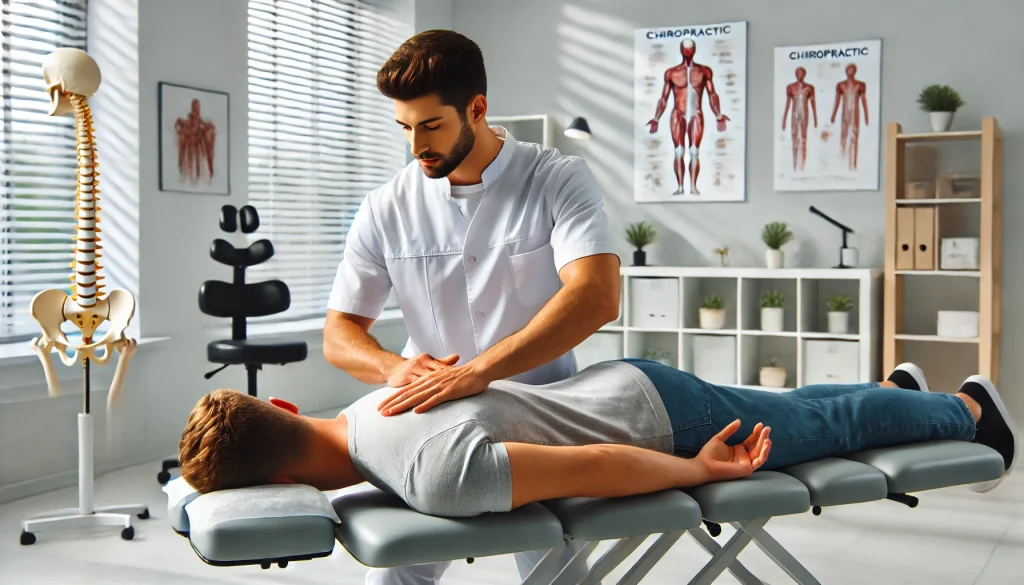Chiropractic adjustments are well-regarded for alleviating pain, improving mobility, and enhancing overall well-being. However, some individuals experience what is known as a “toxic release” or “healing crisis” after an adjustment. This phenomenon involves the release of stored toxins from the body, leading to various symptoms. This article explores how long does toxic release last after chiropractic adjustment, the causes, symptoms, duration, recovery strategies, chiropractic techniques, and patient care related to toxic release.
Causes of Toxic Release
Understanding the underlying causes of toxic release can help patients better manage and mitigate symptoms.
Adjustments
Adjustments refer to misalignments in the spine that can impede nerve function and trap toxins within tissues. When a chiropractor adjusts these misalignments, it can release these stored toxins into the bloodstream, initiating detoxification. By correcting adjustments, chiropractors aim to restore proper nerve function and improve overall health, but this can also mean that previously dormant toxins are mobilized.
Spinal Manipulation
Spinal manipulation, a key aspect of chiropractic care, involves adjusting the spine to correct misalignments and improve function. This manipulation can mobilize toxins stored in muscles and other tissues, leading to their release and subsequent processing by the body. The process can stimulate the nervous system, promoting the release of chemicals and waste products that have built up over time.

Inflammation
Chiropractic adjustments can reduce inflammation, which may contribute to releasing inflammatory toxins. Conversely, the adjustment might initially exacerbate inflammation in some cases, leading to a temporary increase in toxin levels. This dual role of inflammation management highlights the complexity of the body’s response to chiropractic care, balancing between immediate inflammatory responses and long-term benefits.
Metabolic Waste
Adjustments can stimulate the release of metabolic waste products that have accumulated in the body. These waste products must be processed and eliminated through the body’s detoxification systems. The increased metabolic activity can temporarily overload the detoxification pathways, causing the symptoms associated with toxic release.
Symptoms and Effects
Recognizing the symptoms and effects of toxic release can help patients understand what to expect and how to cope with them.
Headaches
Headaches are a common symptom experienced after toxic release. As toxins are mobilized and processed, they can cause discomfort and pain in the head. This response is due to the body’s effort to eliminate these substances, which can temporarily affect the central nervous system.

Fatigue
The body’s effort to detoxify can lead to a feeling of tiredness or fatigue. This is a natural response as the body allocates energy to detoxify. During this time, the body may prioritize detoxification over other activities, leading to a noticeable decrease in energy levels.
Nausea
Some individuals may experience nausea as a result of the detoxification process. This can occur when the body is overwhelmed by the sudden release of toxins. The digestive system, liver, and kidneys are particularly active during this phase, sometimes leading to an upset stomach.
Muscle Soreness
Muscle soreness is typical following an adjustment, as the body adjusts to new alignments and releases toxins. This soreness usually subsides within a few days. The adjustment of the spine can cause temporary muscle strain as the body adapts to its new posture and function.
Digestive Changes
Changes in bowel movements or mild digestive discomfort may occur as toxins are processed through the gastrointestinal system. These symptoms can include bloating, gas, or changes in stool consistency. The digestive system is crucial in eliminating toxins, and increased activity can lead to temporary disruptions.
Skin Reactions
Rashes or other skin issues can arise as toxins are expelled through the skin. These reactions are typically mild and resolve on their own. The skin, being the body’s largest organ, can sometimes act as a secondary elimination route, leading to visible changes as the body detoxifies.
How Long Does Toxic Release Last After Chiropractic Adjustment
The duration and recovery process for toxic release vary among individuals but generally follow certain patterns.
Immediate Effects
Symptoms such as headaches, fatigue, or muscle soreness can occur within hours of an adjustment. These immediate effects are usually the body’s first response to releasing toxins. Recognizing these early symptoms can help individuals take prompt action to support their body’s detoxification efforts.
Short-Term Duration
Most symptoms last from 24 to 72 hours as the body processes and eliminates toxins. It’s important to support the body with proper care and hydration during this period. Short-term management strategies can greatly alleviate discomfort and promote quicker recovery.
Long-Term Recovery
Complete detoxification and recovery might take longer, depending on individual health and the level of toxins released. For some, it may take several weeks for the body to fully adjust and recover. Long-term strategies, including consistent chiropractic care and lifestyle adjustments, can enhance overall health and reduce future toxic build-up.
Factors Affecting Duration
Individual health status, hydration levels, and the amount of toxins present can all influence the duration of symptoms. Healthier individuals with fewer toxins may experience shorter and less intense symptoms. Other factors, such as age, diet, and overall physical condition, also play significant roles.
Recovery Strategies
Staying hydrated, resting, and using supportive therapies like massage or gentle exercise can help alleviate symptoms. Eating a balanced diet rich in nutrients supporting detoxification is also beneficial. Implementing these strategies can significantly enhance the body’s ability to recover from the adjustment.
Chiropractic Techniques
Different chiropractic techniques can influence the severity and duration of toxic release symptoms.

Manual Adjustments
Traditional hands-on methods can effectively release toxins but may cause more pronounced symptoms in some individuals. These adjustments involve direct manipulation of the spine. While highly effective, they may result in a more intense detoxification response.
Instrument-Assisted Adjustments
These techniques use specialized tools and may result in a gentler release of toxins. Instruments like the Activator Method can provide precise adjustments with less force. This approach is often suitable for individuals who are sensitive to manual adjustments.
Soft Tissue Therapy
Methods like massage can aid in releasing and removing toxins from the body. Soft tissue therapy helps to relax muscles and promote circulation, facilitating detoxification. This technique can complement spinal adjustments by addressing muscular and fascial components.
Craniosacral Therapy
This gentle technique can help detoxify the body with minimal discomfort. It involves subtle manipulations of the skull and spine to promote fluid movement and toxin release. Craniosacral therapy can be particularly beneficial for individuals who are highly sensitive to more aggressive techniques.
Activator Methods
Low-force techniques using a small instrument can release toxins with less impact on the body, leading to fewer symptoms. This method is particularly useful for individuals who are sensitive to more forceful adjustments. The Activator Method can provide precise and controlled adjustments, minimizing the body’s immediate stress response.
Patient Care and Management
Effective patient care and management are crucial for minimizing the discomfort associated with toxic release and ensuring a smooth recovery.
Pre-Adjustment Preparation
Preparing for a session by staying hydrated and eating a balanced diet can help minimize symptoms. Being well-nourished and hydrated helps the body cope with the release of toxins. Pre-adjustment preparation can significantly enhance the body’s resilience to the detoxification process.
Post-Adjustment Care
Best practices include rest, hydration, and gentle physical activity to support detox. During recovery, it is important to listen to your body and avoid overexertion. Post-adjustment care should focus on providing the body with the resources it needs to eliminate toxins efficiently.
Hydration
Drinking plenty of water is crucial for flushing out toxins. Adequate hydration supports kidney function and helps to eliminate toxins more efficiently. Ensuring proper hydration before and after adjustments can reduce the intensity of detox symptoms.
Dietary Recommendations
Eating foods rich in antioxidants and nutrients supports the body’s detoxification processes. Fruits, vegetables, lean proteins, and whole grains can provide essential nutrients for recovery. A nutrient-dense diet can enhance the body’s natural detoxification capabilities and promote faster recovery.
Follow-Up Appointments
Regular check-ins with your chiropractor can help monitor and manage symptoms effectively. Follow-up appointments allow for adjustments to the treatment plan as needed. These sessions provide an opportunity to address any lingering symptoms and refine the approach to care.
Patient Education
Informing patients about what to expect and how to manage symptoms can help them feel more comfortable and prepared for detoxification. Education empowers patients to actively participate in their recovery and health maintenance. Understanding the process and supporting their body can significantly improve the overall experience.

